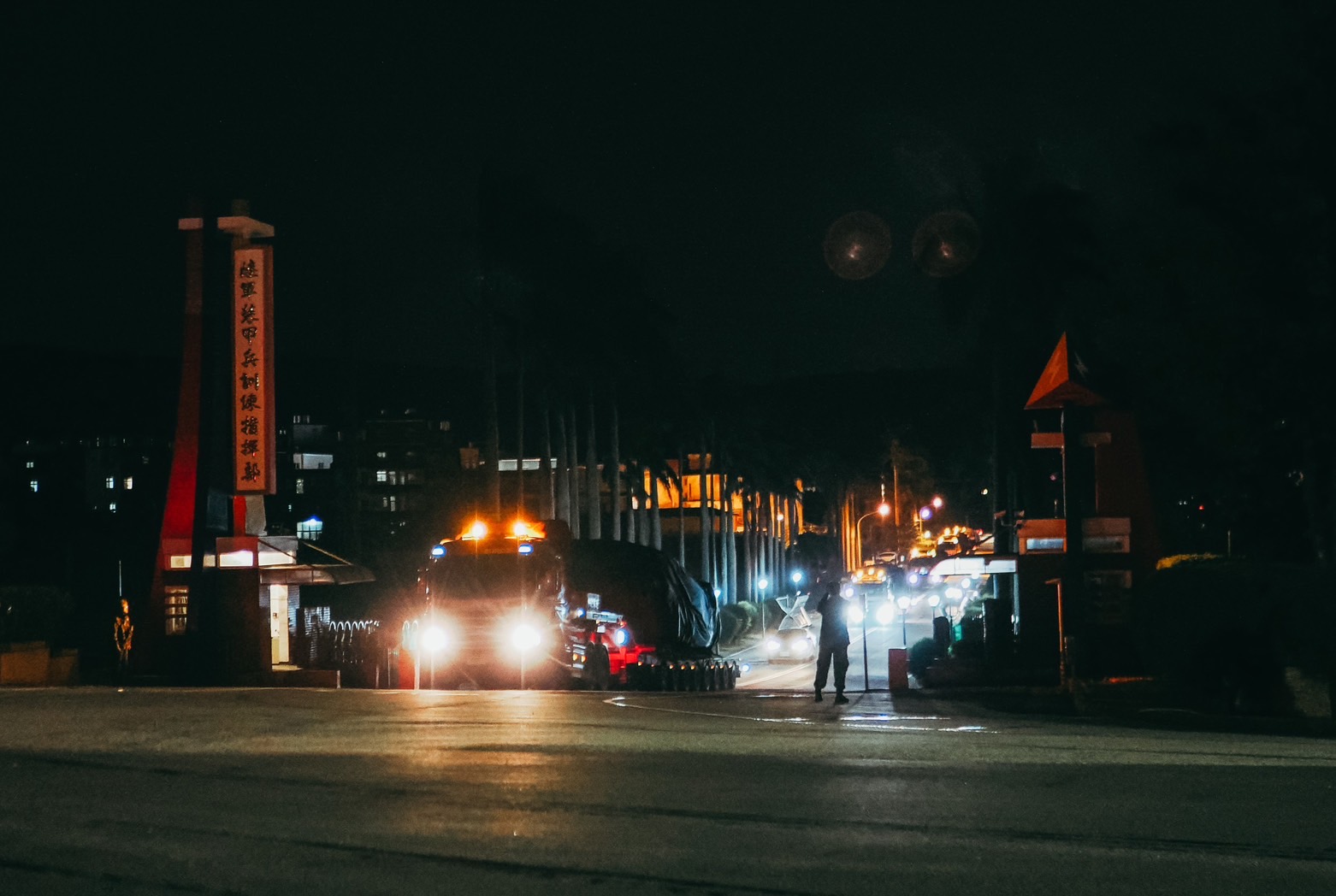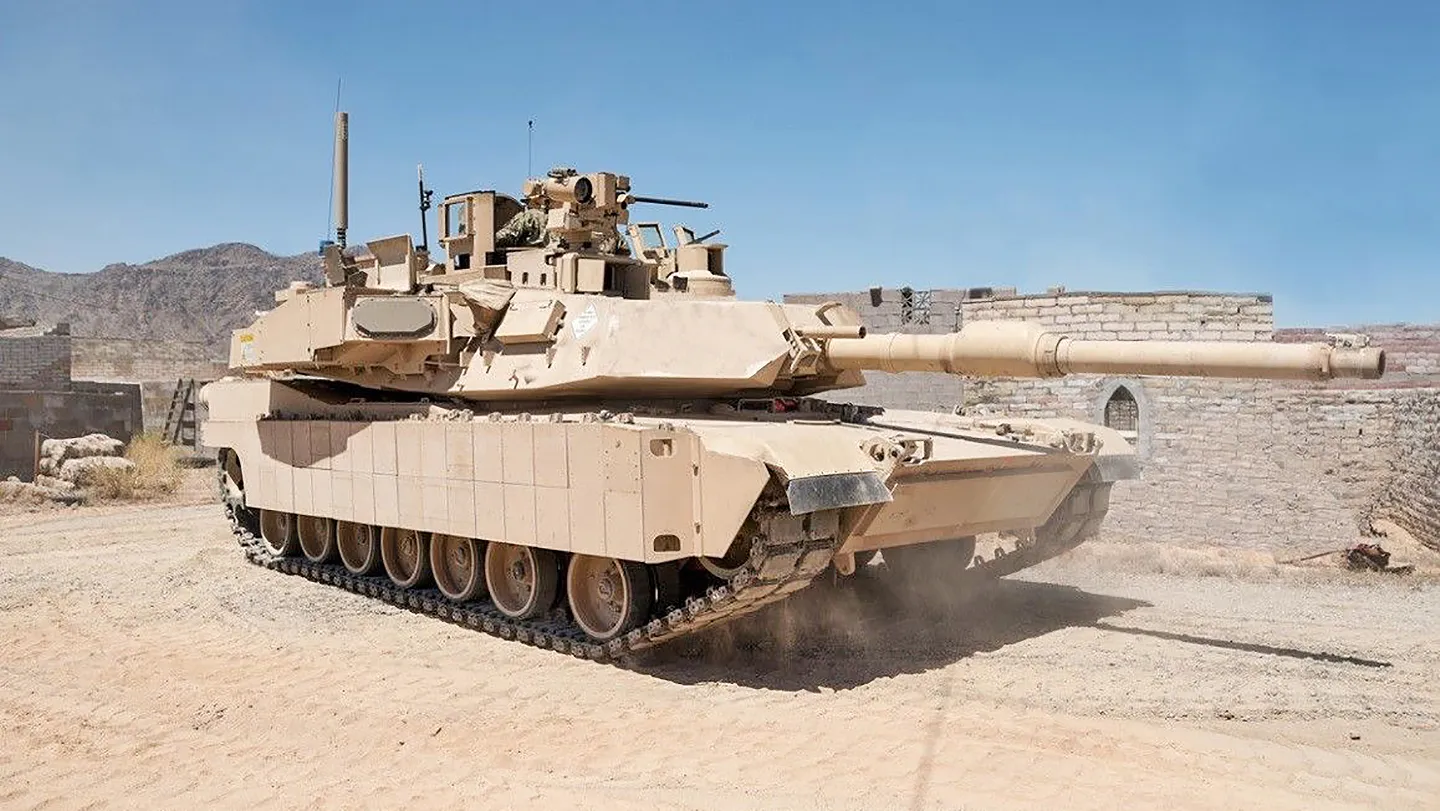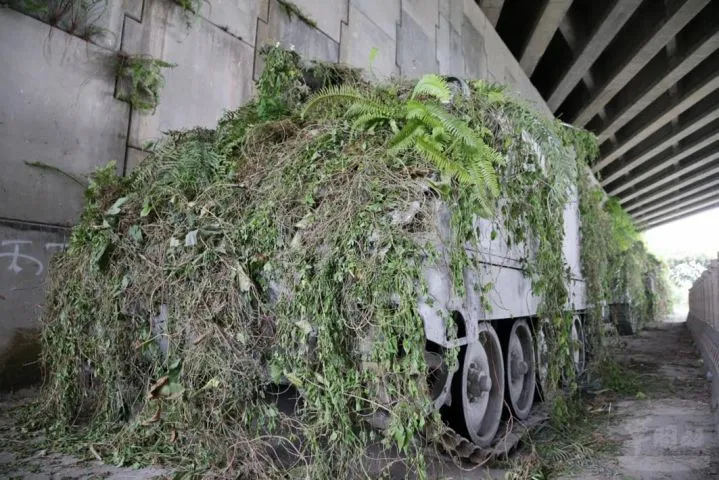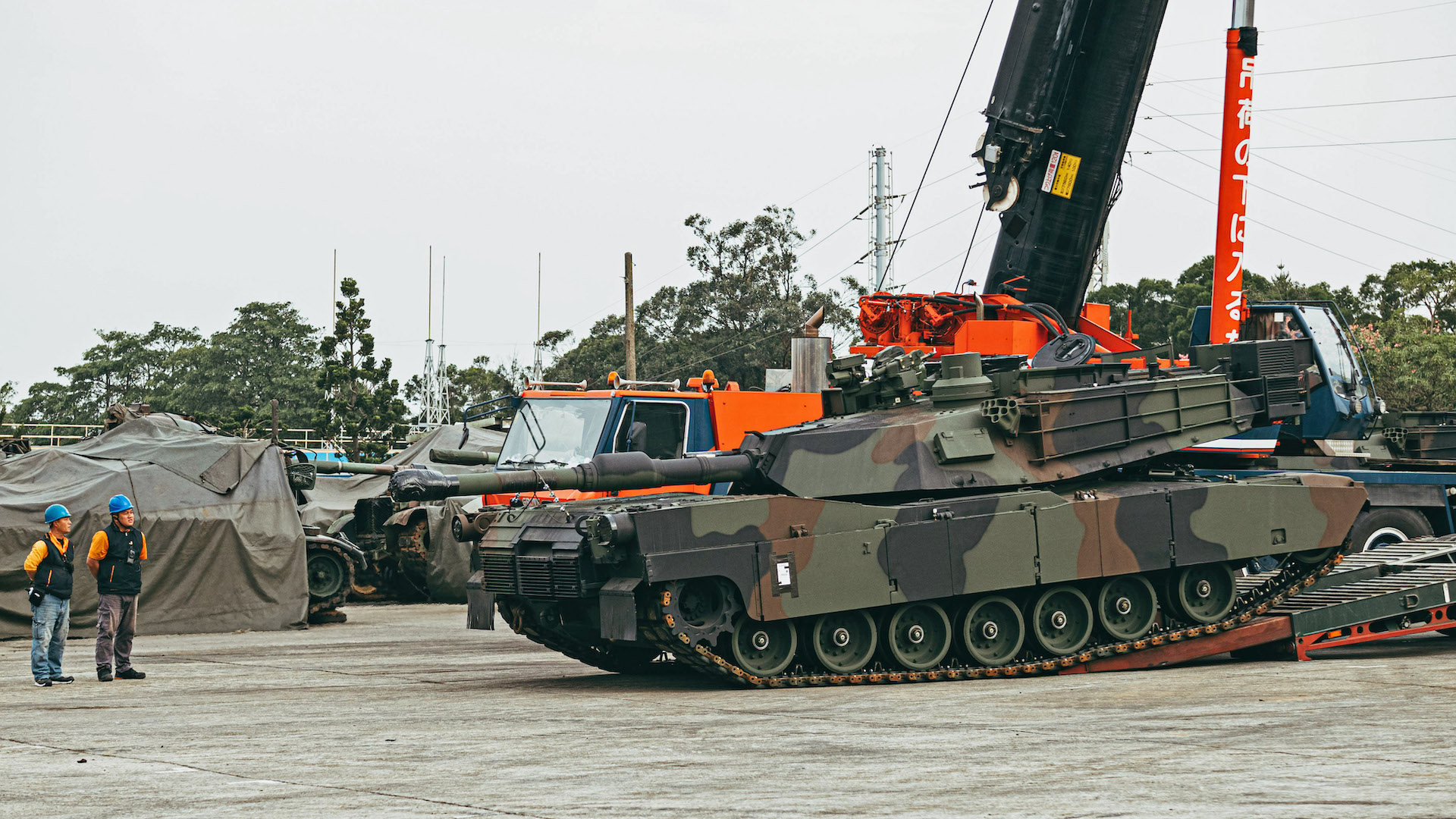Taiwan has received its first batch of M1A2T Abrams main battle tanks as it continues its drive to modernize its armed forces, which face an expanding military threat from Beijing. While the upgrade for the Republic of China Army (ROCA) — which was still operating 1950s-era M41A3 Walker Bulldog light tanks up until recently — is obvious, there are still questions about how suitable the big and heavy Abrams is for the island’s very particular defensive requirements.
Taiwan’s Ministry of National Defense (MND) confirmed today that the first shipment of M1A2T tanks had arrived from the United States. On its official social media channel, the MND published imagery showing the Abrams being inspected and then loaded onto flatbed trucks for onward transport. The tanks were apparently unloaded from a ship at the port of Taipei yesterday.

According to Taiwan’s state-owned Central News Agency (CNA), the initial shipment comprised 38 M1A2T tanks, at least some of which will be delivered to the ROCA’s Army Armor Training Command at Hsinchu in northwestern Taiwan. Other reports from Taiwan suggest that 10 of the new tanks will remain with the training unit, while the others will go to frontline armored brigades in Linkou District, New Taipei, and in Hukou Township, Hsinchu County. From there, they would be best positioned to help defend northern Taiwan.

In total, Taiwan has 108 M1A2T tanks on order. Citing the MND, the CNA reports that another 42 of the tanks will be delivered next year, with the remaining 28 to follow in 2026.
Taiwan’s order for M1A2T tanks was approved in July 2019, in a deal valued at around $2 billion, as announced by the Defense Security Cooperation Agency (DSCA). The arms package also included 250 Block I-92F Stinger anti-aircraft missiles, M88A2 armored recovery vehicles, and Oshkosh M1070A1 heavy equipment transporters.
“This proposed sale of M1A2 tanks will contribute to the modernization of the recipient’s main battle tank fleet, enhancing its ability to meet current and future regional threats and to strengthen its homeland defense,” the DSCA’s statement said at the time. “These tanks will contribute to the recipient’s goal of updating its military capability while further enhancing interoperability with the United States and other partners.”

The ‘T’ in the designation of the new tanks indicates that this version was specifically developed for Taiwan. Previous Taiwanese media reports also described these as “M1A2X” tanks.
Broadly speaking, the M1A2T is equivalent to the M1A2 SEPv3 version — or System Enhancement Package version 3 — which you can read more about here.
Development of the SEPv3 was launched by the U.S. Army in response to lessons learned during fighting in Operation Iraqi Freedom. Changes to the tank address space, weight, and power issues, as well as enhancing overall survivability. The SEPv3 version offers increased electrical power, vehicle health management systems, upgraded armor, the ability to deploy the Israeli-made Trophy active protection system, integrated counter-improvised explosive device (IED) protection, a new auxiliary power unit, and embedded training aids. The U.S. Army describes it as “the most reliable Abrams tank ever produced.”

The M1A2T specifically features a reconfigured turret and various unspecified modifications to improve its survivability, as well as a modified electrical system and auxiliary power unit, and a new ammunition datalink — used when firing programmable munitions.
Taiwan’s requirement for new armor is reflected in the fact that the last tanks to be delivered from the United States were M60A3s, orders for which began to be received in 1994.
Since then, the ROCA has relied on M60A3s as well as locally upgraded CM11 and CM12 Brave Tiger tanks.

The CM11, which first appeared in 1990, is something of a hybrid, combining the turret from older U.S.-supplied M48A3 Pattons with the chassis of the M60A3. This tank also features a fire-control system derived from the M1A1 Abrams, making it more accurate, including on the move. Taiwan also obtained a significant number of additional fire-control upgrade kits and installed them on some of their remaining M48A3s, resulting in the CM12.

Until 2022, the ROCA also used the M41A3 Walker Bulldog light tank, a type first delivered to the U.S. Army in 1951, which saw Cold War-era combat with the U.S. military during the Bay of Pigs invasion and later in Vietnam. Taiwan introduced it back in 1958 but later used it for training.

Nevertheless, much-reworked M41D tanks, based on the original M41 but with a new diesel engine, re-armed turret, and thermal imaging equipment, remain in use in small numbers.
Even discounting the antiquated M41, the M1A2T is a much more modern and capable proposition than any of the ROCA’s other tanks. The M60A3, CM11, and CM12 are all armed with 105mm main guns that are outclassed by the larger 120mm cannons on modern Chinese main battle tanks, for example. The M1A2T uses a 120mm main gun complemented by a Common Remotely Operated Weapon Station (CROWS) that combines a sensor suite with a machine gun.
Facing the threat of a People’s Liberation Army (PLA) invasion, Taiwan’s defensive strategy means that every single tank and armored vehicle would have to count toward the island’s defense, were it to go to war. With Beijing continuing to claim Taiwan as its territory and with repeated threats to invade and seize control of the island by force if necessary, this has driven the retention of even obsolescent equipment. This is something that the M1A2T deliveries go some way to address.
ROCA tanks and other assets take part in Combat Readiness Week maneuvers in 2020:

On the other hand, the Abrams is a big, heavy, expensive, and maintenance-intensive machine. Even sustaining these tanks in combat is a big ask, with their gas-turbine engines placing significant demands on fuel specifically.
While there’s no doubting its firepower and performance, as well as very high levels of protection, it’s not invulnerable — as Ukraine’s experience has demonstrated.
At the same time, the weight of the Abrams — especially the SEPv3 version — is such that it is not always able to negotiate softer ground or more basic roads.
When Australia ordered the SEPv3, it was reported that significant parts of the north of that country — where much military training takes place — is too swampy and the roads too rudimentary to support the new tanks.
The Trophy active protection system alone is said to add around 5,000 pounds of weight, with an overall weight, in combat, of 73.6 tons. It’s unclear if Taiwan will receive Trophy for its Abrams, but the equipment would provide a very useful additional layer of protection against various threats — including potential drones.
The Abrams is also arguably not best suited to the kinds of urban warfare that the ROCA might have to engage in if it meets a PLA invasion — something that it already regularly trains for in these kinds of settings. Scenarios like this also pose a particular challenge for main battle tanks.

More generally, there are questions about the utility of heavy armor in potential conflicts in the Indo-Pacific region. Most such scenarios are expected to heavily feature air and sea platforms, as well as missiles. These concerns have also led to a resurgence in interest in light tanks, including the U.S. Army’s new M10 Booker, which you can read all about here.

In fact, the particular advantages of the M10 for Taiwan are something we have discussed in the past, speaking to an armor expert:
“The Booker would prove a valuable platform in a Taiwan ground fight … About two-thirds of the island is mostly rugged mountains. It features flat to rolling plains in the densely populated west, which faces mainland China. The M10’s smaller size compared to an Abrams would allow it to better maneuver through the tight, restricted urban areas where much of the fighting would take place. It would be able to pass over bridges an Abrams might not be able to cross due to weight concerns and operate … with a much lighter logistical footprint.

The smaller 105mm main gun on the M10, the same expert added, “is powerful enough to handle most Chinese equipment.”
Nevertheless, for the time being, the ROCA is focused on the M1A2T and the major advantages in firepower and protection that it will bring compared with its predecessors.
It’s also important to note that these tanks are just part of a multilayered defensive strategy for the ROCA, which also includes AH-64 Apache attack helicopters, long-range artillery, and multiple-launch rocket systems, as well as coastal defense missiles that would hope to create havoc among an invasion fleet before it even managed to land any troops and supporting armor.
The nature of the modern battlefield and its myriad of threats means that tank-on-tank warfare is not as probable nowadays as it once was, although Ukraine has shown the tank is not a dead concept by any means. But should it happen that the ROCA has to face Chinese tanks in such a situation, the M1A2T Abrams at least offers a much higher level of capabilities than the tanks otherwise in Taiwanese service.
Contact the author: thomas@thewarzone.com
